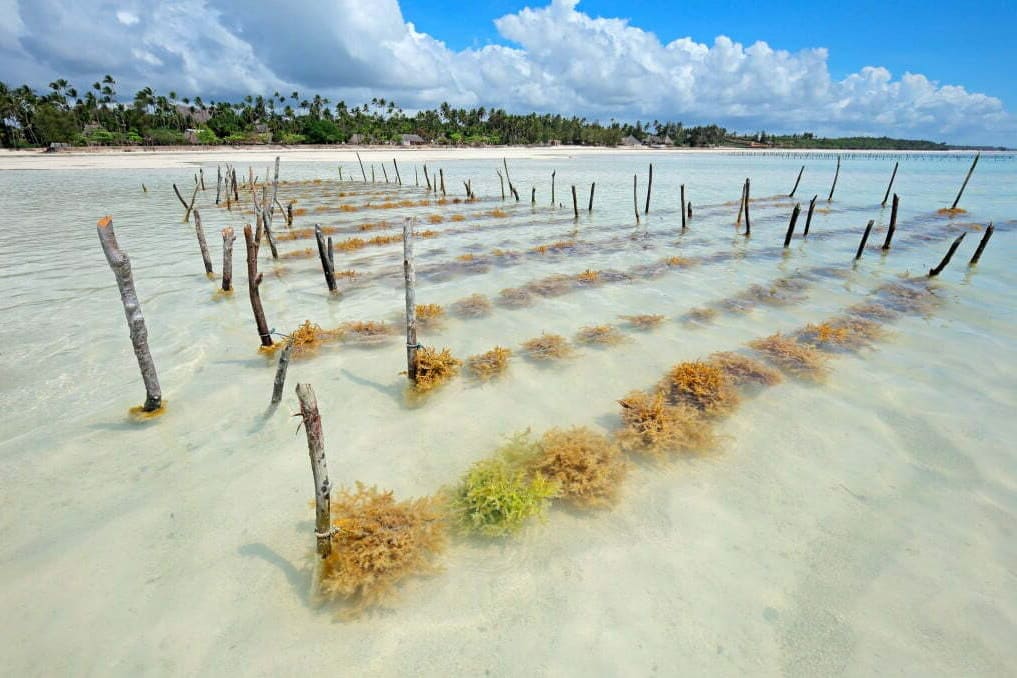By Catherine Keit Silale
Kwale, Kenya – For over a decade, Fatuma Diwan, a resilient widow and mother of seven, has been at the forefront of seaweed farming in Kibuyuni, Kwale County, along Kenya’s southern coast.
Before venturing into seaweed farming, Fatuma, like many others, grappled with financial hardships as her late husband’s income from fishing wasn’t sufficient to sustain their family. Reflecting on those times, she shares, “I was a housewife. My husband did fishing, but because of his small income, we could not afford everything for our children, only the basics.”

However, life took a positive turn when the decline in fish population, attributed to overfishing, left the local community struggling for sustenance. In 2001, a distressing event occurred when thousands of dead fish washed ashore, leaving fishermen without a catch. Fearful of poisoned fish, the community was forced to abandon fishing altogether.
The Kenya Marine and Fisheries Research Institute (KMFRI) identified a lack of marine macroalgae as a contributing factor to the decline in fish population. In response, seaweed farming emerged as a sustainable solution, with Kibuyuni village leading the charge. With support from KMFRI, Fatuma and other women broke traditional barriers and embarked on underwater seaweed farming in the Indian Ocean.
Seaweed farming quickly gained momentum in coastal Kenya, transforming livelihoods and empowering women like Fatuma. Today, over 600 farmers from five coastal communities actively engage in commercial seaweed cultivation, marking a significant shift from traditional fishing practices.
Fatuma recounts her daily routine, describing the unique process of tending to underwater seaweed gardens. “Every morning, we dive into the ocean, dressed in traditional Swahili attire, to harvest mature seaweeds planted weeks ago,” she explains. The farming process, synchronized with tidal patterns, requires meticulous care and attention.

Despite facing challenges such as flush floods, tidal currents, and temperature fluctuations, seaweed farming has brought prosperity to Kibuyuni. The community now boasts over 300 acres of underwater seaweed gardens, contributing significantly to the local economy.
Nasoro Muhamed, a researcher and conservationist with KMFRI, highlights the broader environmental benefits of seaweed farming. “Seaweed plays a crucial role in combating climate change by sequestering carbon and protecting marine ecosystems,” she emphasizes.
However, sustaining the momentum of seaweed farming requires innovation and adaptation. In response to stagnant market prices, Kibuyuni women have diversified their products, producing items such as soap, hats, and fertilizers for local and tourist markets.
As the global demand for seaweed continues to rise, communities like Kibuyuni are exploring avenues to capitalize on this lucrative industry. Research initiatives, such as quantifying carbon sequestration, offer promising opportunities for earning carbon credits and further enhancing the economic viability of seaweed farming.
In conclusion, seaweed farming stands as a beacon of hope for coastal communities, empowering women, protecting the environment, and driving sustainable economic growth in South Coast Kenya.




